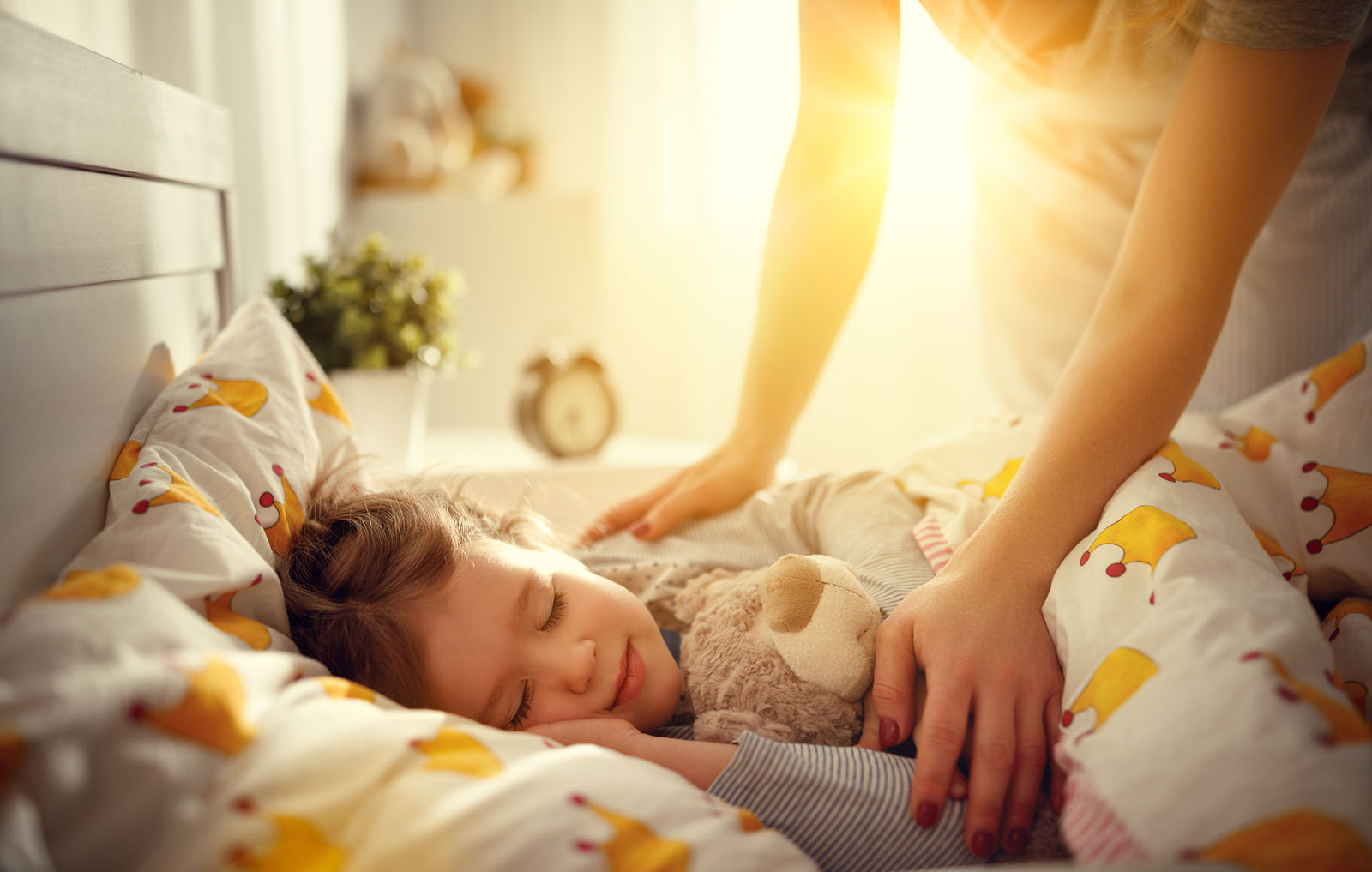Sleep is an integral part of a baby’s routine and important for their development. As such, it’s an important part of the Mud Puddles’ schedule and something we take great care to ensure is done in a safe manner.
There are specific ‘safe sleeping’ guidelines that can reduce the risk of anything occurring while your baby is sleeping. We follow the SIDS guidelines which we’ve listed here for you should you wish to know more about our practices and/or employ the same methods at home.
Always sleep your baby on their back
The risk of babies dying unexpectedly and suddenly (such as with SIDS or SUDI) increases if they sleep on their side or their tummy. So, always ensure your baby sleeps on their back—on a firm, flat surface—from birth. While much is still not entirely understood about SIDS or SUDI, one reason babies are better on their back while sleeping is the positioning of their respiratory airways. When they’re in the back position, their upper respiratory airways sit above their oesophagus (digestive tract) which means any milk regurgitated during sleep can be easily swallowed, avoiding blockage of the respiratory tract. Sleeping on their tummy, a baby’s digestive tract sits above their upper airways which means any regurgitated or vomited substances are more likely to be inhaled and potentially affect their airway and lungs.
When they are awake, tummy play is entirely safe and an important part of a baby’s development. It can help to remember it this way: Back to sleep, tummy to play, sit up to watch the world.
Once they’re a little older (often from around 4 months), they may begin turning over in their sleep. Still always place them in the safe sleeping position but then let them find their own sleeping position. It’s recommended to place them in a safe sleeping bag—one with fitted arm and neck holes without a hood.
Keep their head and face uncovered
We all move around in our sleep and babies are no exception. Reduce the risk of SIDS or SUDI by ensuring your baby’s head remains uncovered while sleeping. This is especially important if you use blankets as they may manoeuvre to slip down under the bedding. Always place your baby’s feet at the bottom of the cot and ensure bedding is securely tucked with no soft toys, lambs wool, bumpers or pillows around them. Alternatively, you may wish to use a safe sleeping bag with fitted arm and neck holes and no hood. It’s also important to always remove any head coverings before putting your baby down to sleep.
Ensure a smoke free environment
Cigarette smoke is harmful to humans of all ages, but particularly to babies—both before and after birth. This includes smoke from both marijuana and tobacco. Babies with parents who smoke either during or post-pregnancy, have an increased risk of SIDS. While the reasons for this aren’t entirely clear, experts are in agreeance that an entirely smoke free environment will reduce the risk for your baby. So keep your home, car and anywhere else your baby spends time free from cigarettes. Mud Puddles is a smoke-free zone.
Provide a safe sleeping space
- Does the cot meet current Australian Standards? Refer to the “Keeping Baby Safe” guide via www.productsafety.gov.au to ensure your cot (and other apparatus such as carriers, prams, slips and car restraints) meets current standards.
- Is the mattress the correct size for the cot? Is it both firm, clean and flat? There should be no more than 20mm between the cot sides and ends and the mattress. A cushion, beanbag or pillow is not a safe mattress.
- Is the bedding safe? Ensure the cot is free from doonas, loose bedding, pillows, lambs wool, bumpers and soft toys—all of which are unnecessary and may obstruct your baby’s breathing in the case of their face getting covered. Consider any wrapping in line with developmental stages and discontinue when your baby is able to roll from their back to their tummy and then to their back again.
Room-share up to twelve months
Evidence suggests that room-sharing with a baby for the first six to twelve months reduces the risk of SUDI. Provide a safe sleeping place for your baby within the same room as an adult care-giver. While at home, this would be you. Of course, it’s important that you get your own sleep so it’s expected that you observe your baby constantly but it’s helpful to have them close by to be on hand should anything occur. While in day care with us, we always have an adult present in the room while babies are sleeping to keep a watchful eye over them and ensure they’re sleeping safely.





